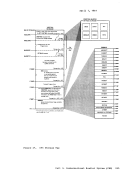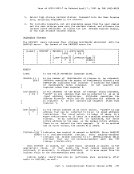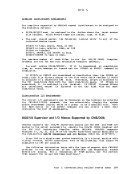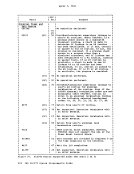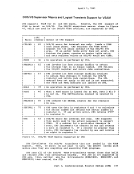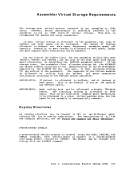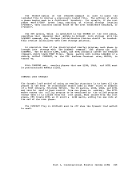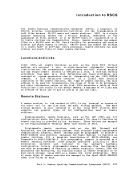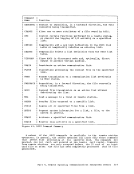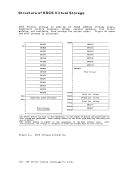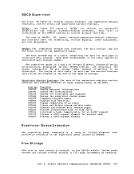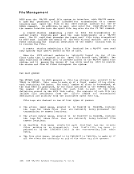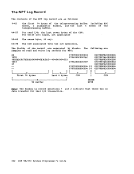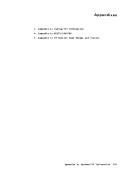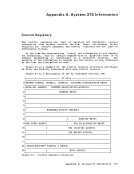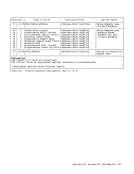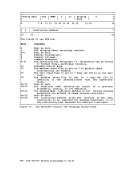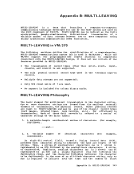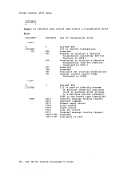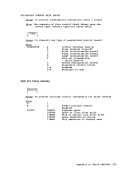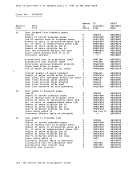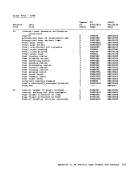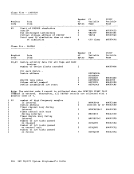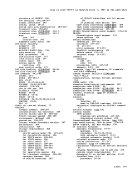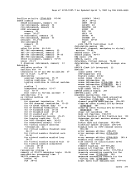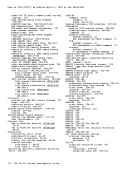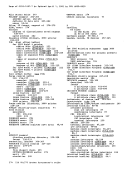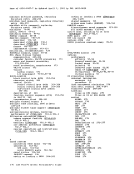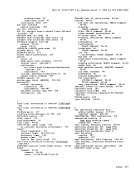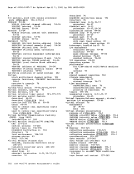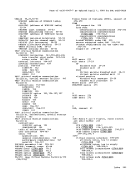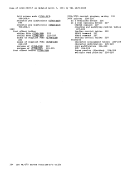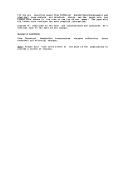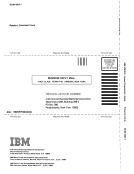April 1, 1981
Accounting Records
The accounting data gathered byVM/370 can help in analysis of overall
system operation. Also, accountinq data can be used to bill
There are three types of accounting records: the virtual machine user
records, records for dedicated devices as well as T-disk space assigned
to virtual machine users, and accounting records generated as a result
ofuser initiated DIAGNOSE X'4C' instruction. A eMS batch virtual
machinecreates an accounting record with the userid and account number
of theuser who sent his job to the batch machinee Accounting records
are prepared asSO-character card images and sent to a punch file at
various times. output class C
is reserved for accounting records.
If the amount of free storage (available page frames) is relatively
small and the card punch is not periodically assigned to punch CP's
accounting cards, it is possible forCP's accounting routine to
progressively use a significant percentage of the available page frames
and cause a paqe thrashing condition to occur inVM/370. This happens
because the accounting routine creates and maintains accounting records
inreal storaqe, and does not free that storage space until the
accounting records are punched on the real system card punch.
To eliminate this problem, it is recommended that one punch pocket be
permanently dedicated to this accounting function, or if that is not
feasible, to punch all the accumulated records every 1 to 2 hours.
Accounting cards are punched and selected to pocket 2 of any class C
card punch when a user logs off of the system, detaches a dedicated
device or T-disk, or issues aDIAGNOSE code X' 4C' instruction. (If the
real punch is a2540, the accounting cards are put in pocket 3.) These
records should be kept for system accounting purposes.
Accounting Records forVirtual Machine Resource
Usage
The
terminal session (or when theACNT command is invoked) is as follows
(columns 1-28 contain character data; all other data is in hexadecimal
form, except as noted):
9-16
17-28
29-3233- 36 37-40 41- 44
45-
53-56
57-60 Contents Userid-- Account num1::er Date and Time of Accou nting (mmddyyhhmmss)
Number of seconds connected toVM/370 System time used, including time
forVM/370 supervisor functions
Milliseconds of virtual processor time used
Number of page reads
Number of page writes
Number of virtual machineSIO instructions for
nonspooledI/O Number of spool cards to virtual punch
Number of spool lines to virtual printer (this
includes one line for each carriage control command)
Part 2.Control Program (CP) 127
Accounting Records
The accounting data gathered by
system operation. Also, accountinq data can be used to bill
There are three types of accounting records: the virtual machine user
records, records for dedicated devices as well as T-disk space assigned
to virtual machine users, and accounting records generated as a result
of
machine
of the
are prepared as
various times. output class C
is reserved for accounting records.
If the amount of free storage (available page frames) is relatively
small and the card punch is not periodically assigned to punch CP's
accounting cards, it is possible for
progressively use a significant percentage of the available page frames
and cause a paqe thrashing condition to occur in
because the accounting routine creates and maintains accounting records
in
accounting records are punched on the real system card punch.
To eliminate this problem, it is recommended that one punch pocket be
permanently dedicated to this accounting function, or if that is not
feasible, to punch all the accumulated records every 1 to 2 hours.
Accounting cards are punched and selected to pocket 2 of any class C
card punch when a user logs off of the system, detaches a dedicated
device or T-disk, or issues a
real punch is a
records should be kept for system accounting purposes.
Accounting Records for
Usage
The
terminal session (or when the
(columns 1-28 contain character data; all other data is in hexadecimal
form, except as noted):
9-16
17-28
29-32
45-
53-56
57-
Number of seconds connected to
for
Milliseconds of virtual processor time used
Number of page reads
Number of page writes
Number of virtual machine
nonspooled
Number of spool lines to virtual printer (this
includes one line for each carriage control command)
Part 2.

























































































































































































































































































